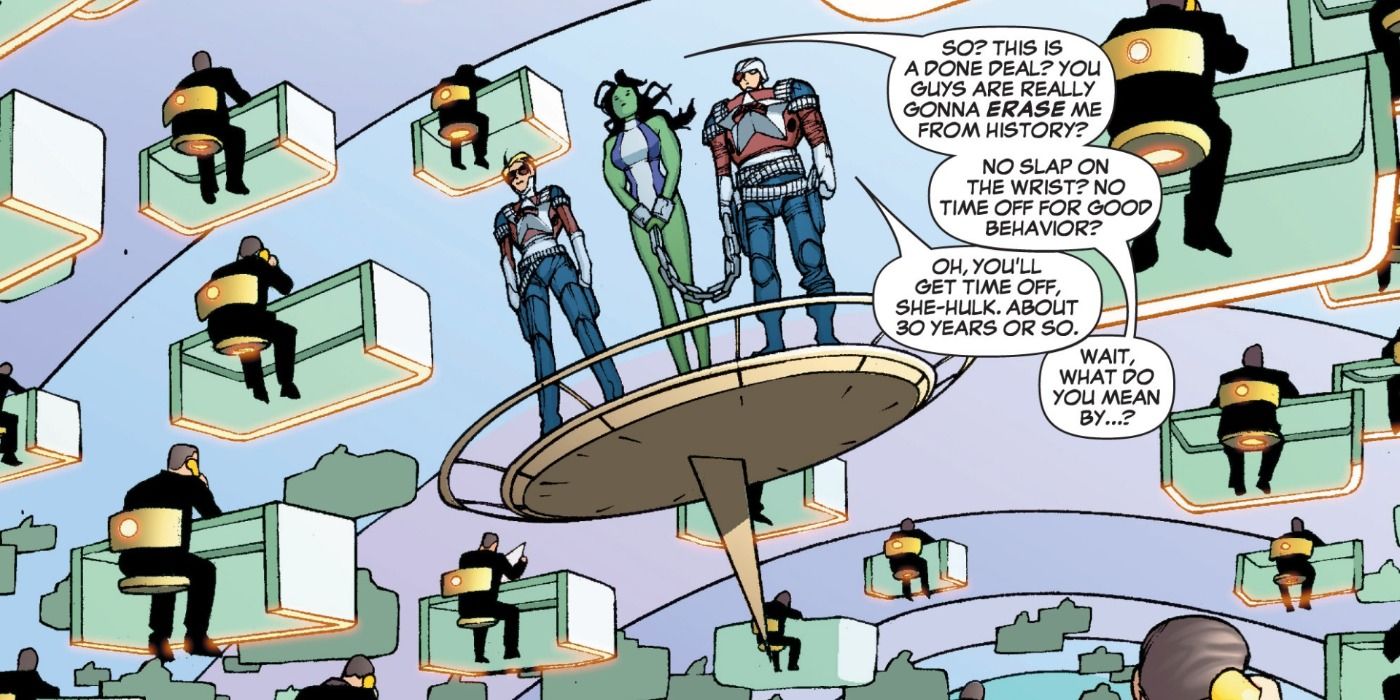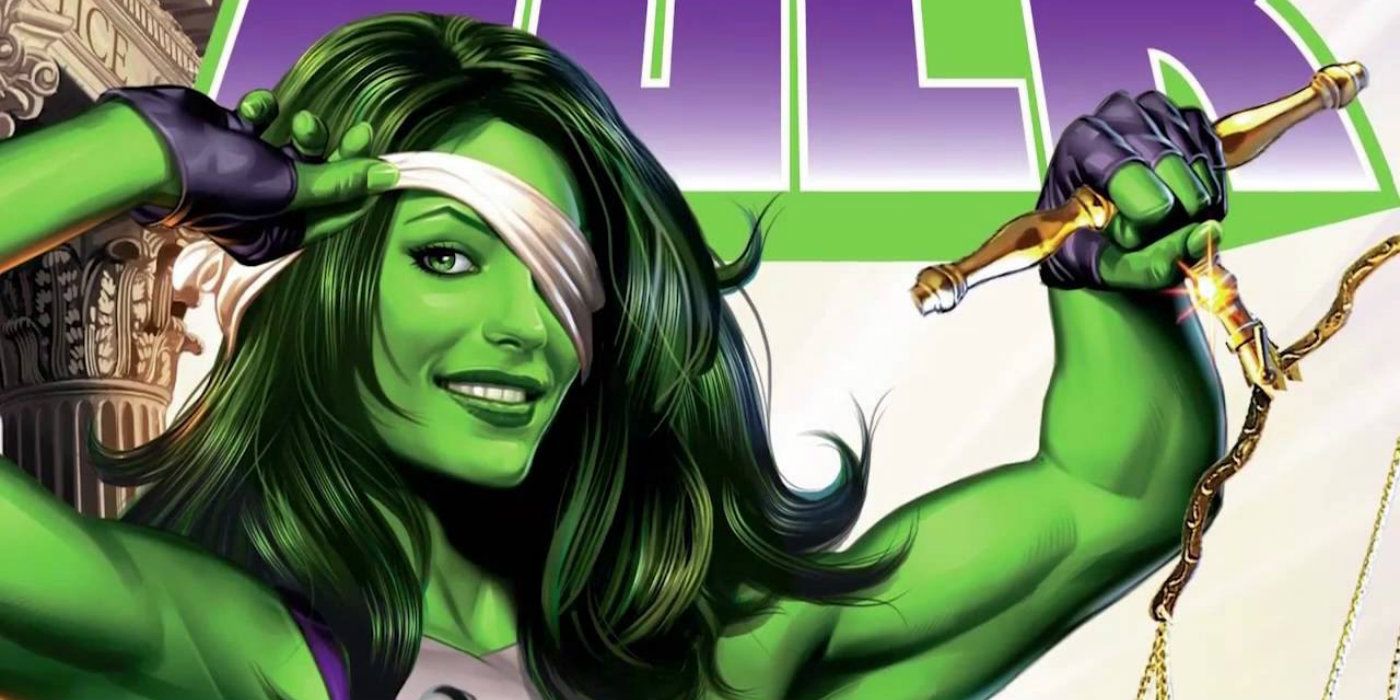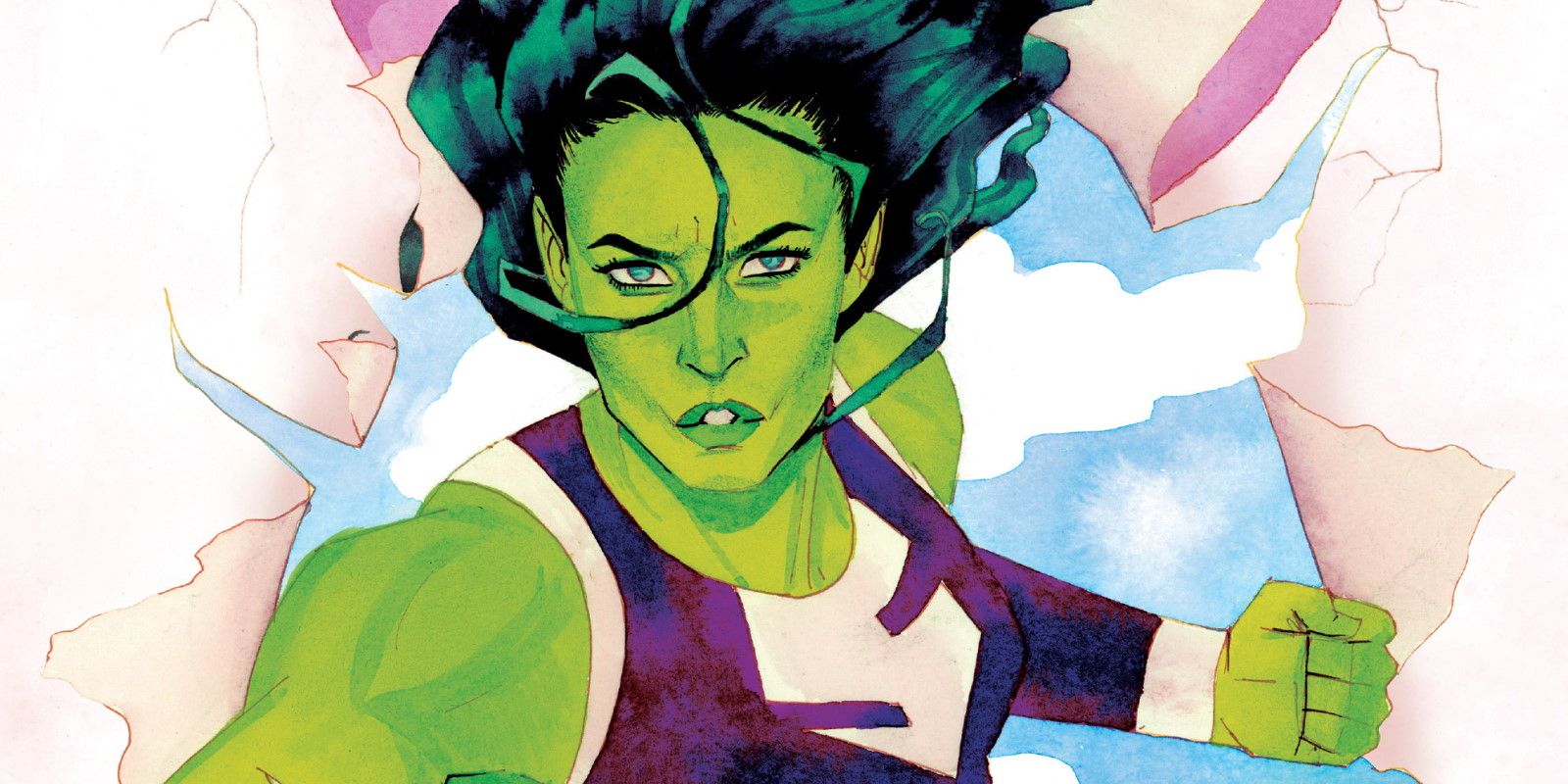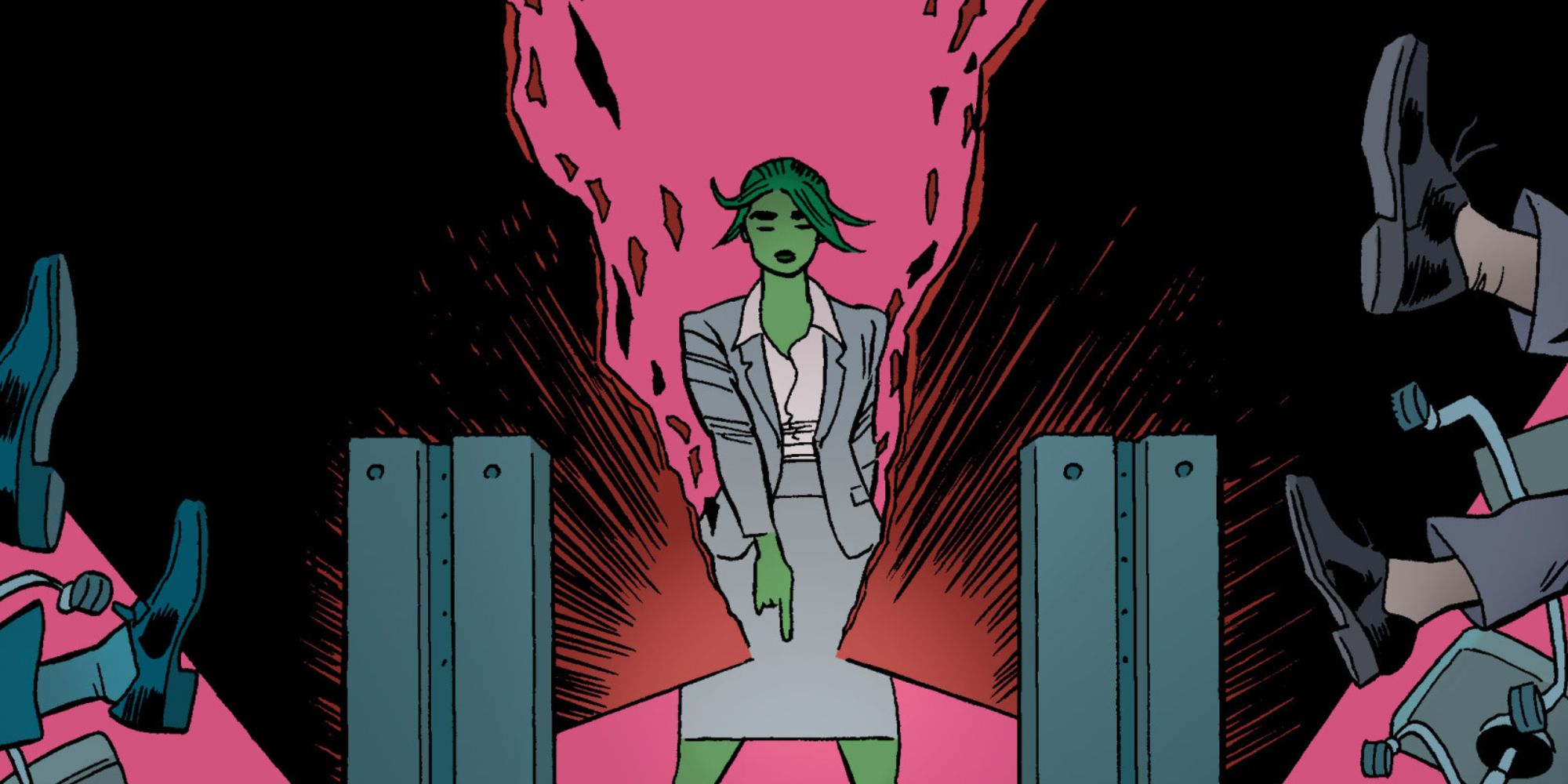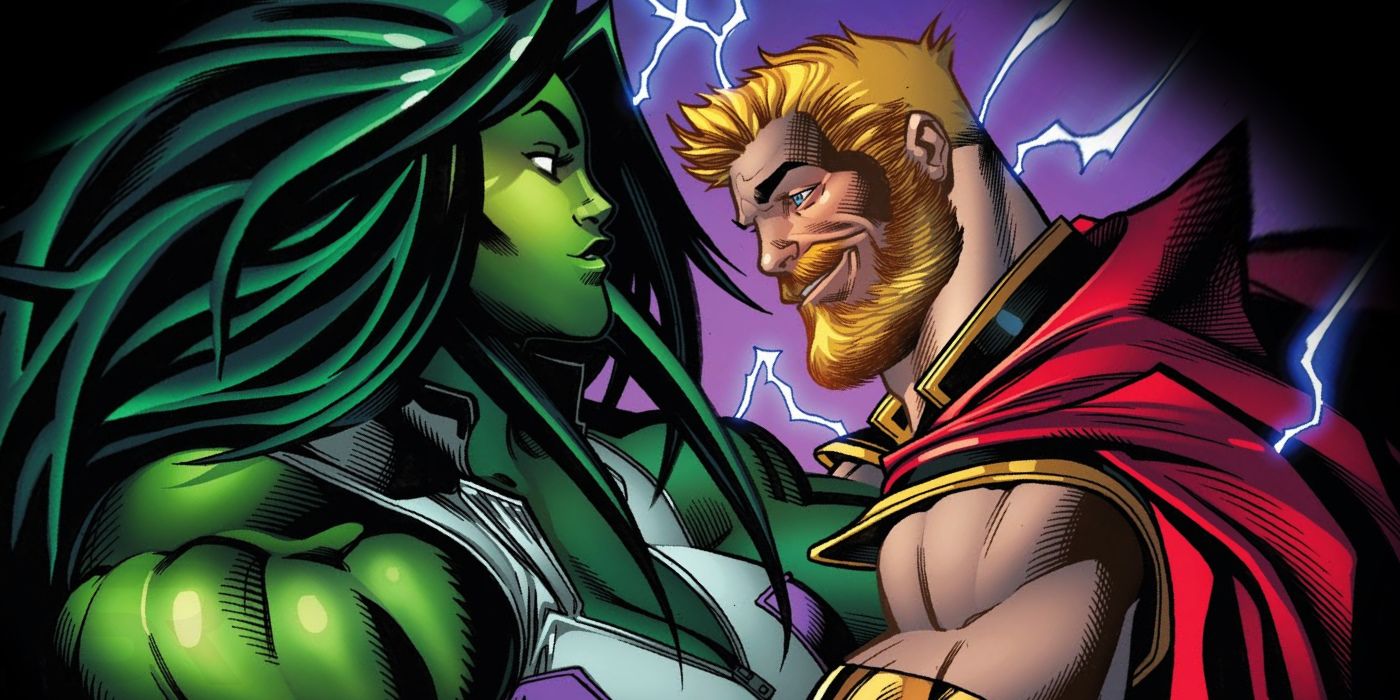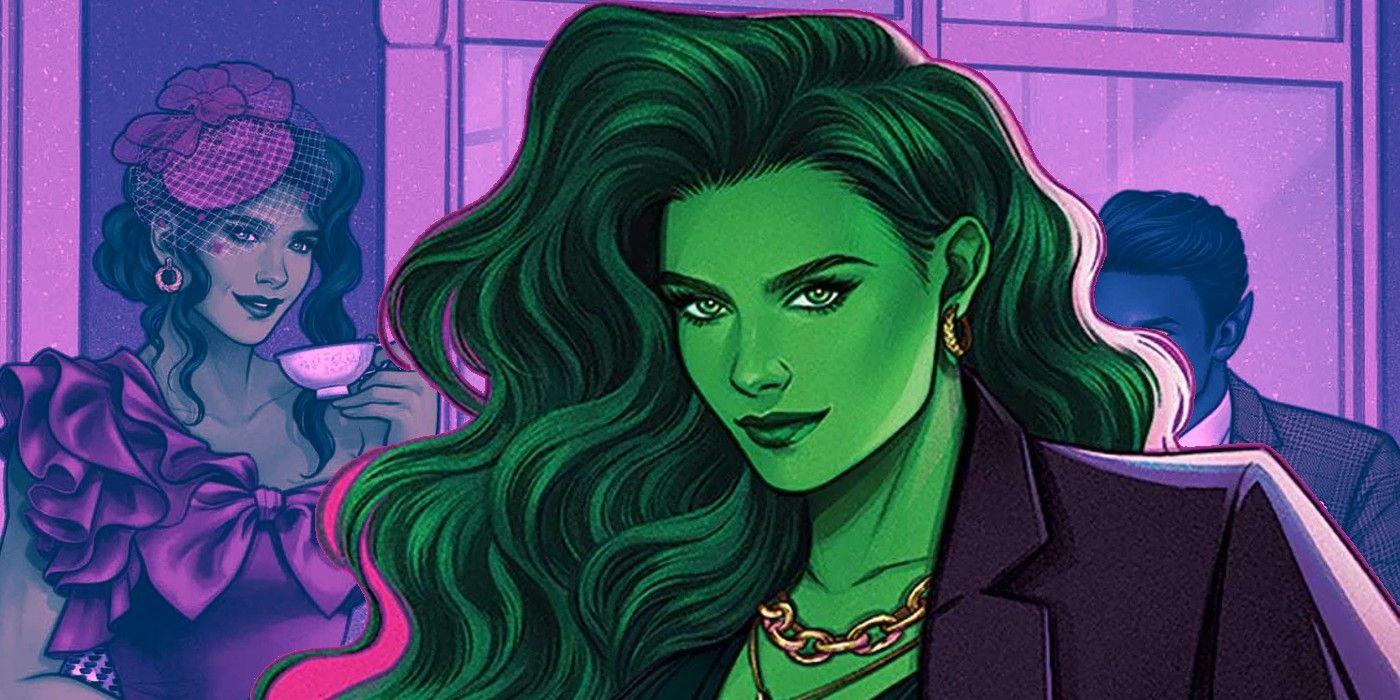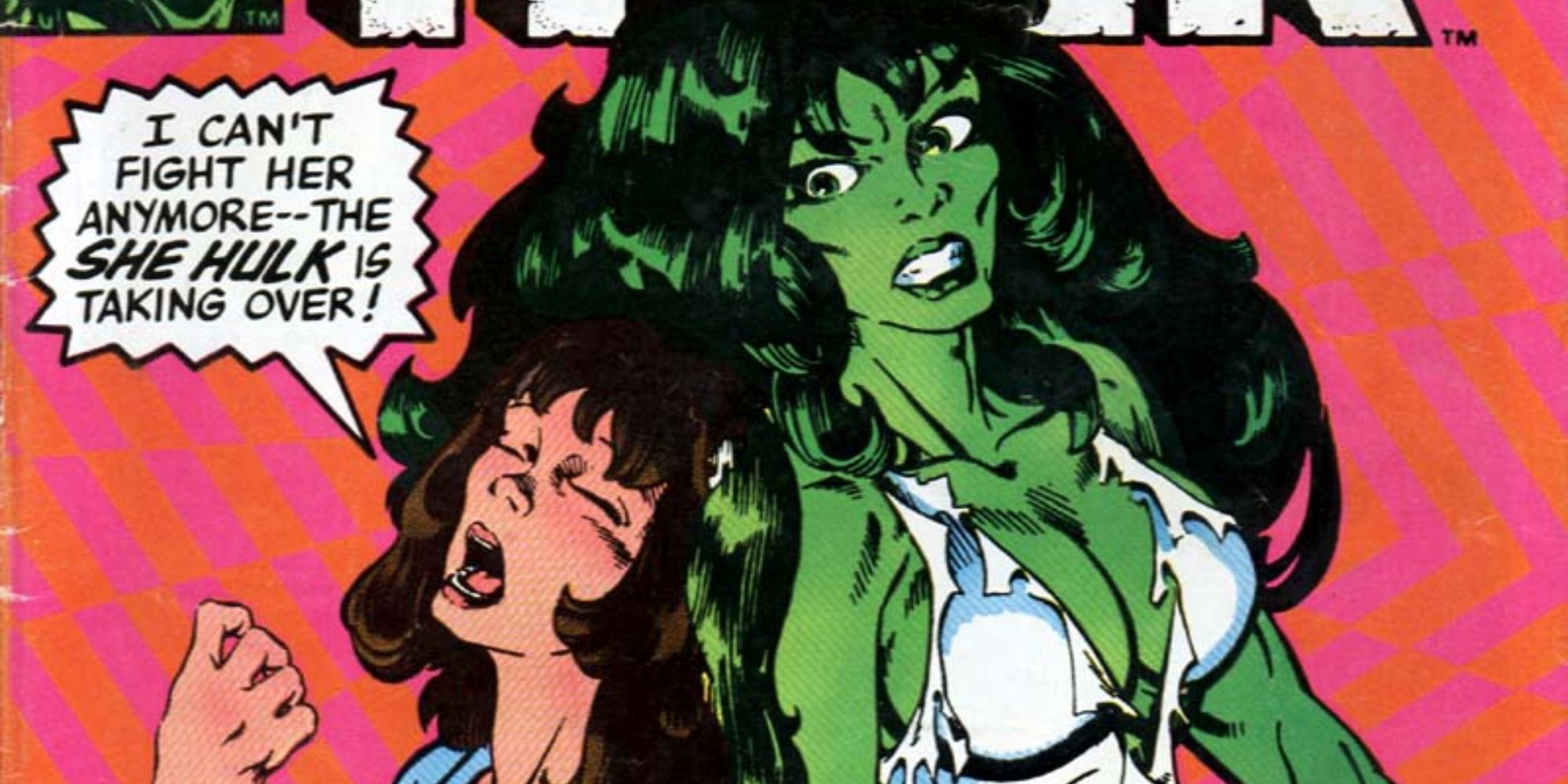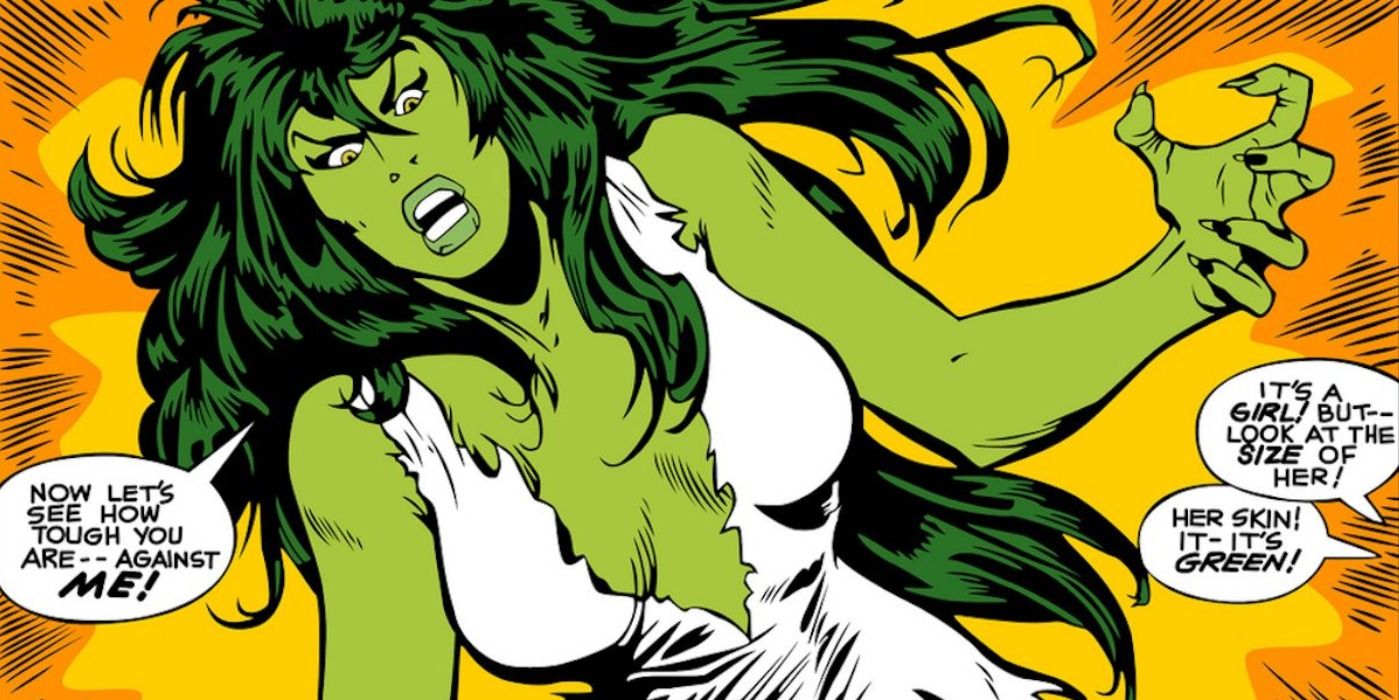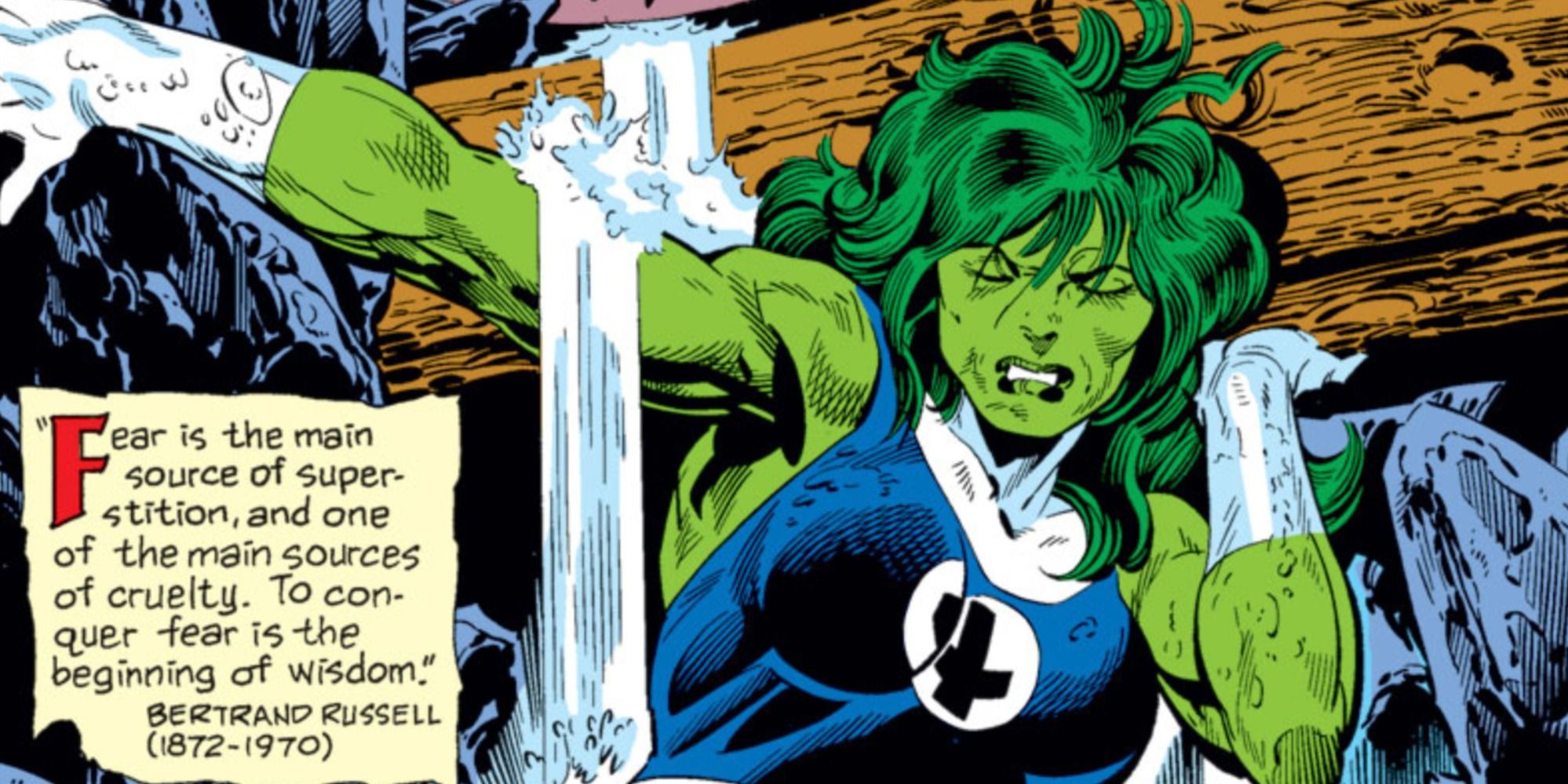She-Hulk: Attorney At Law draws on some fantastic Marvel Comics for inspiration, including the early 2000s run by writer Dan Slott that focused heavily on Jennifer Walters' career as a lawyer for the first time. The show also takes inspiration from the best comic book artists to draw She-Hulk, who all contributed to her status as an iconic superhero.
Most comic book fans know John Byrne's contribution to She-Hulk across various titles including her late 1980s solo series, but many other great artists also drew her over the years. From her earliest appearances to her most recent adventures, She-Hulk's legacy includes a who's who of talented artists.
Juan Bobillo
Juan Bobilo provides the art for the essential run in the early 2000s that the MCU series seems to take many cues from, easily among the best She-Hulk comics for newcomers. Bobillo's art stands out in many ways from previous She-Hulk artists, thanks to his distinctive blocky line-work that renders everyone somewhat cartoony.
His style works within the context of the series, which goes to very unexpected places. Jen stands trial before the Time Variance Authority for inadvertently revealing to a Hawkeye variant his eventual fate at the hands of the Scarlet Witch in Avengers: Disassembled.
Adi Granov
Adi Granov provided the covers for the 2004 volume from Slott and Bobilo and his distinctive style provided many iconic images for the character. Granov brought a realism and practicality to She-Hulk few artists matched before or since. Granov's She-Hulk very much resembles the MCU version, which isn't surprising given his connection to the franchise.
Granov provided concept art for numerous MCU movies beginning with the first Iron Man back in 2008. His highly detailed art continues to grace the covers of numerous comic books and video games.
Kevin Wada
Kevin Wada brought a unique flair to She-Hulk when he did the covers for the 2014 She-Hulk volume, among the best She-Hulk comic storylines likely to be adapted into the new show. Wada's work in watercolor brought a softer and richer dynamic to She-Hulk and often emphasized her page-breaking quality as a character possessing meta-awareness.
Wada provided the covers for numerous Marvel Comics in the 2010s, including a lengthy run on the solo Iceman series and a few covers for America, the 2017 solo series featuring America Chavez.
Javier Pulido
Javier Pulido's stylized art graced the pages of the 2014 series, and he created many iconic She-Hulk comic book panels, including one where she breaks a table with her finger. Pulido's somewhat cartoony style likely reminds some fans of Mike Allred in its fine, clean lines. The simplicity also allows the color to shine, a feature with She-Hulk in most of her comics.
Pulido drew numerous comics at Marvel in the 2010s, including a contribution to Marvel Point One, a one-shot from 2012 which features the first appearance of the Sam Alexander Nova.
Ed McGuinness
Ed McGuinness offered a dramatically different take on She-Hulk in recent Avengers comics. He lent his signature expressive style full of muscle to She-Hulk, making her much larger than ever before. While some debate emerged among fans regarding She-Hulk's physical look in the MCU, McGuinness showed that she has a broad range of interpretation.
Comic book fans likely know McGuinness from his extensive work on Superman and Batman, and he also contributed to Marvel's other fourth wall-breaking superhero, Deadpool.
Jen Bartel
Artist Jen Bartel provides the covers for She-Hulk's latest solo series and they're fantastic. Her art works perfectly with She-Hulk's artistic lineage, with fully painted pin-up-like art that leans heavily on bold use of solid colors. The covers feel connected to the Byrne era covers in their graphic design, while also pushing things in a new direction.
Bartel won an Eisner Award in 2019 for her cover work on Blackbird (Image) and Submerged (Vault) and she contributes numerous covers to various titles, including many Marvel Comics variants.
Michael Golden
Michael Golden contributed numerous covers to early issues from The Savage She-Hulk in the 1980s and helped define the character's look. His detailed and dynamic art style, which proved influential for numerous artists in the late 1980s and early 1990s, began to push superheroes away from the traditional line-work common to the early Bronze Age.
Golden drew many iconic covers and stories for Marvel and DC Comics. Comic book fans know Rogue first appeared in Avengers Annual #10, a key comic drawn by Golden. Rogue steals Carol Danvers' powers in this story, something that may happen in the MCU.
John Buscema
John Buscema co-created She-Hulk with writer Stan Lee, introducing her in The Savage She-Hulk #1 in 1980. His classic style embodies the late Silver Age and early Bronze Age in comics, with highly expressive characters crafted with clean and crisp lines. His naturalism lent itself well to She-Hulk, who has always been less comic-booky than her cousin, to the point she literally walks through panel borders.
Buscema's iconic style helped define Marvel Comics in the 1960s and 1970s, and he easily ranks among the best Avengers artists ever thanks to his lengthy run on the title.
John Byrne
John Byrne perhaps more than any other artist defined She-Hulk. His energetic and dynamic style, likely very familiar to X-Men fans, created a vibrant and expressive character as capable of landing a joke as she was a punch. He transformed her from a fairly standard superhero to a revolutionary icon who broke through the conventions of the genre.
Byrne first drew She-Hulk during a brief stint on the Avengers. He then added her to the Fantastic Four during his legendary run on the book in the 1980s, before focusing on her exclusively in The Sensational She-Hulk. His meta approach to the character allowed Byrne to flex his artistic muscles - he homaged several contemporary artists including Frank Miller in imagining them drawing She-Hulk - and in doing so defined her for the ages and changed superhero comics forever.

.jpg)
